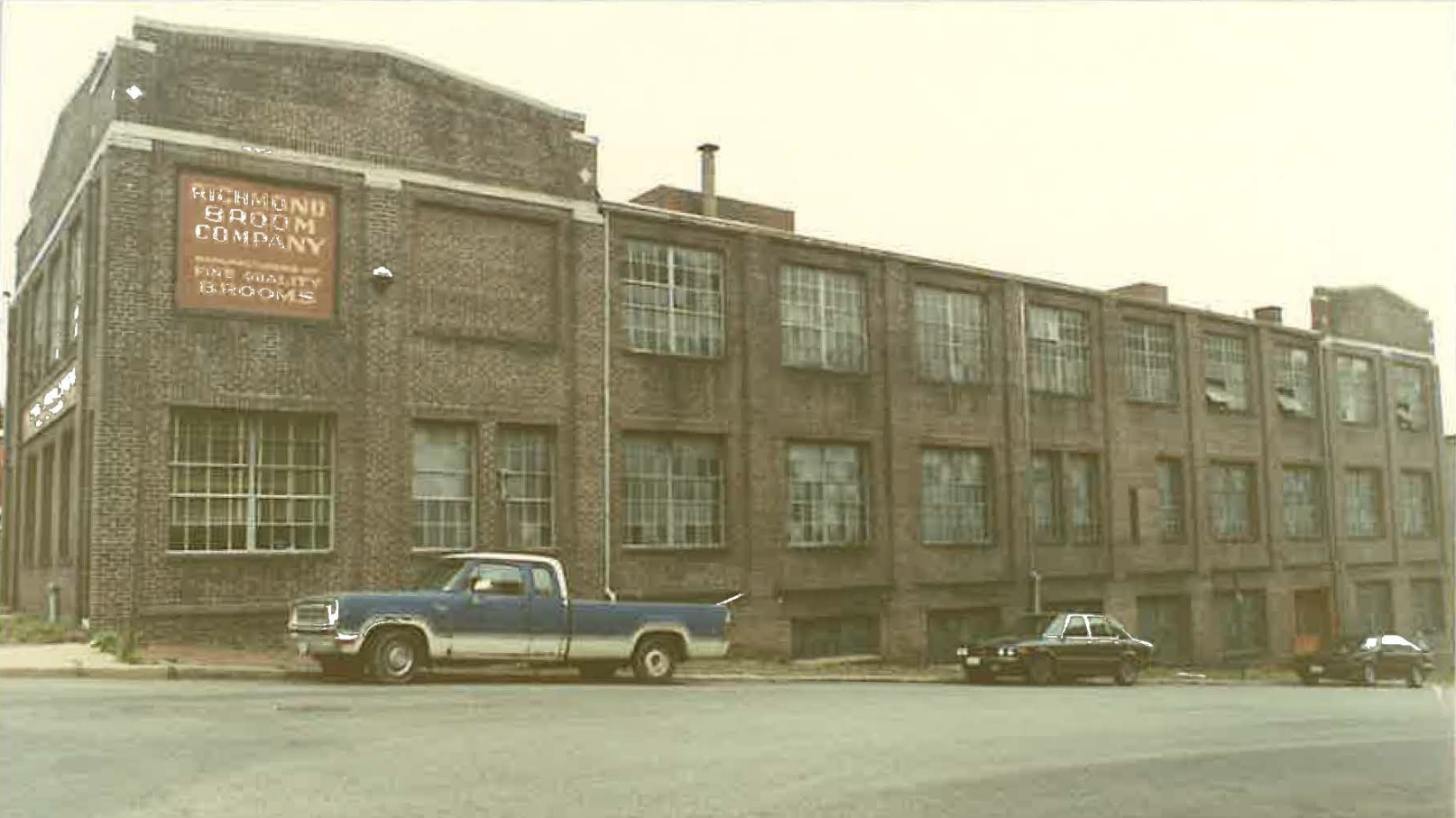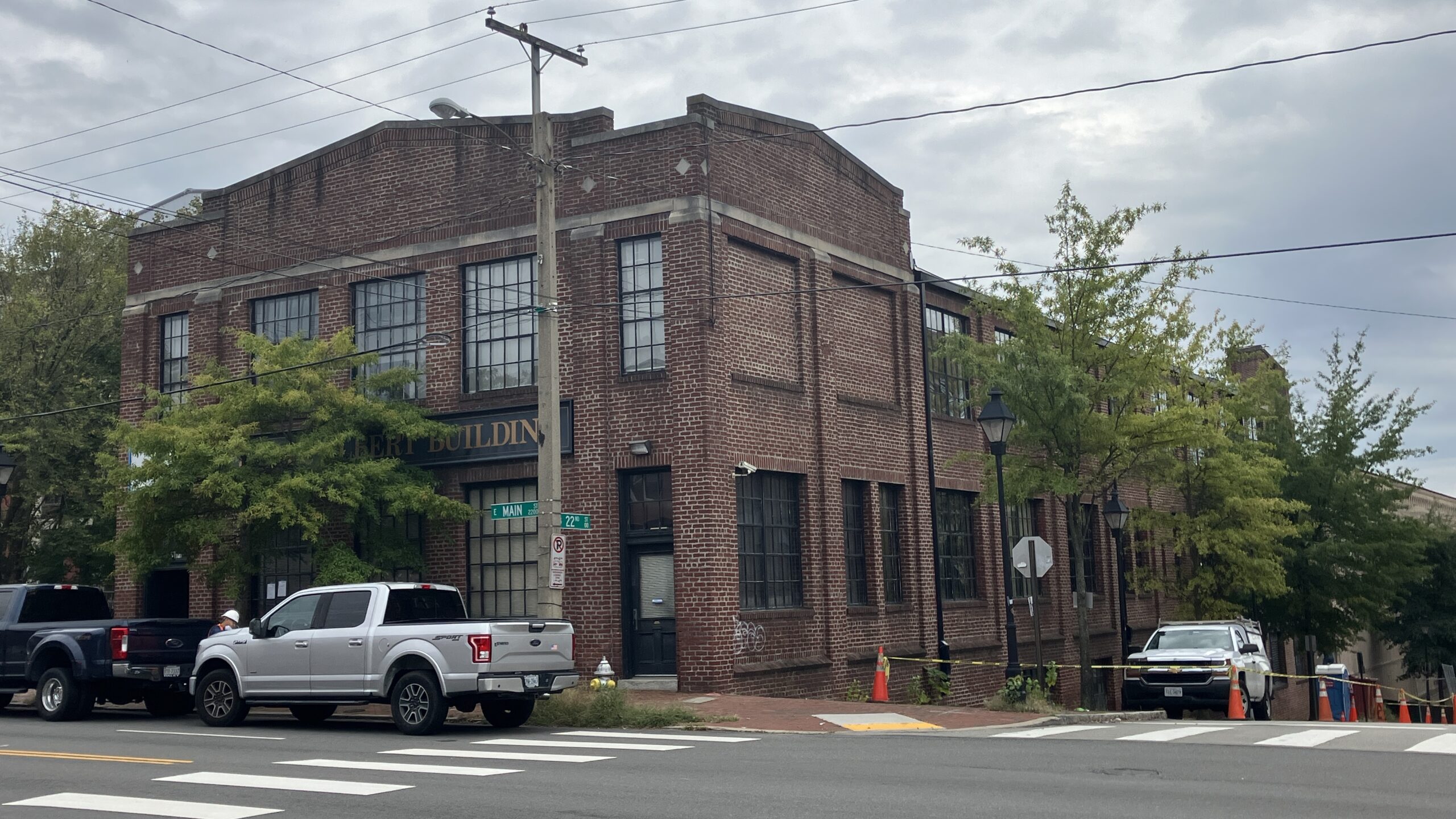A century-old Shockoe Bottom building that years ago was home to a cleaning supplies manufacturer is getting a cleanup of its own.
Work recently began on a residential conversion of the former Richmond Broom Co. building at 2201 E. Main St.
Most recently used as a dialysis center, the two-story building dating back to 1921 is set to be turned into a dozen condominiums by a group led by Charlottesville-based investor Claudine Wispelwey.
The development is Wispelwey’s first in the Richmond area, and she said her group is applying for historic tax credits to help finance the renovation.
“We’re restoring the ceilings and returning the wood floors to the look and appearance of the original manufacturing (facility),” Wispelwey said. “There’s a real sensitivity in bringing it back to what it was.”

The development group is seeking to bring back the “Richmond Broom Co.” signs. (Courtesy Claudine Wispelwey)
Wispelwey’s group bought the roughly 13,600-square-foot building in the spring for $1.3 million in a deal brokered by Divaris’ Read Goode and Thalhimer’s Reilly Marchant.
The condos will be either one- or two-bedroom units. Wispelwey declined to say what price range the units will be listed at. Corinthian Construction is the general contractor, Sadler & Whitehead are the developers’ tax credit consultants, and Hirschler’s Rob Benaicha and Janie Rhoads are their legal counsel.
Wispelwey said they’re hoping to have the project complete in summer 2025. As part of the restoration, she said they’re hoping to bring back the ‘Richmond Broom Co.’ signs that formerly faced both East Main and South 22nd streets.
A few blocks east past Tobacco Row is 2723 E. Cary St., where local developer Jeremy Connell is planning to build five four-story townhomes.
A century-old Shockoe Bottom building that years ago was home to a cleaning supplies manufacturer is getting a cleanup of its own.
Work recently began on a residential conversion of the former Richmond Broom Co. building at 2201 E. Main St.
Most recently used as a dialysis center, the two-story building dating back to 1921 is set to be turned into a dozen condominiums by a group led by Charlottesville-based investor Claudine Wispelwey.
The development is Wispelwey’s first in the Richmond area, and she said her group is applying for historic tax credits to help finance the renovation.
“We’re restoring the ceilings and returning the wood floors to the look and appearance of the original manufacturing (facility),” Wispelwey said. “There’s a real sensitivity in bringing it back to what it was.”

The development group is seeking to bring back the “Richmond Broom Co.” signs. (Courtesy Claudine Wispelwey)
Wispelwey’s group bought the roughly 13,600-square-foot building in the spring for $1.3 million in a deal brokered by Divaris’ Read Goode and Thalhimer’s Reilly Marchant.
The condos will be either one- or two-bedroom units. Wispelwey declined to say what price range the units will be listed at. Corinthian Construction is the general contractor, Sadler & Whitehead are the developers’ tax credit consultants, and Hirschler’s Rob Benaicha and Janie Rhoads are their legal counsel.
Wispelwey said they’re hoping to have the project complete in summer 2025. As part of the restoration, she said they’re hoping to bring back the ‘Richmond Broom Co.’ signs that formerly faced both East Main and South 22nd streets.
A few blocks east past Tobacco Row is 2723 E. Cary St., where local developer Jeremy Connell is planning to build five four-story townhomes.




Congrats to Read and Reilly for putting this deal together.its great to see buildings preserved and converted to housing. Since historic tax credits are part of the solution, I wonder if they will be required to be rental units for five years?
If the developer doesn’t rent them out for 5 years first then doesn’t that mean they’ll sell at market rate with a significantly reduced property tax burden for the initial owners (the first ten years?). Therefore it’s an incentive to buy so you can live somewhere with a low tax basis for a few years.
I read recently that the city had done away with its residential tax abatement program. Is this true?
Yes. The city tax abatement program has been eliminated. I’m referring to state and federal abatements which together can be 45% of all acquisition and hard construction costs.
Good to know! I missed that change and I was wondering how they were offering condos given how much they changed up financing for new condos after 2008.
Federal tax credits can only be applied to income producing properties (in residential that means rental). However, you can still get state historic tax credits on for sale product. So they can do historic tax credits, but not the full state and federal amount that rental properties could get.
Let’s see, you listed the:
Owner investor
Real Estate Agents
General Contractor
Legal counsel
The Tax Credit consultants
“A nearby other developer”
Why not the design team?
This is an important part of the news article on the project. People want to know.
In 1988, I was fortunate to serve as architect for Dr. Michael Douglas on the Historic Rehabilitation of this building – the Richmond Broom Company. It is documented as one of the first black owned buildings and businesses in Richmond. A lot of history associated with the building has little to do with brooms and more to do with the noteworthy enterprise. I tip my hat to Mike as he had the vision to be one of the original investors in Shockoe Bottom. As architect, this was my first commission, 36 years ago. I am very proud of all the… Read more »
Those booms were, by far, the best you could buy. The owner said that he couldn’t compete with the cheap versions that were flooding the markets he served. I still have one.
Looks like they could make some really nice spaces in there. Good luck with the project.
Very impressed – would love to see the floor plans and elevations.